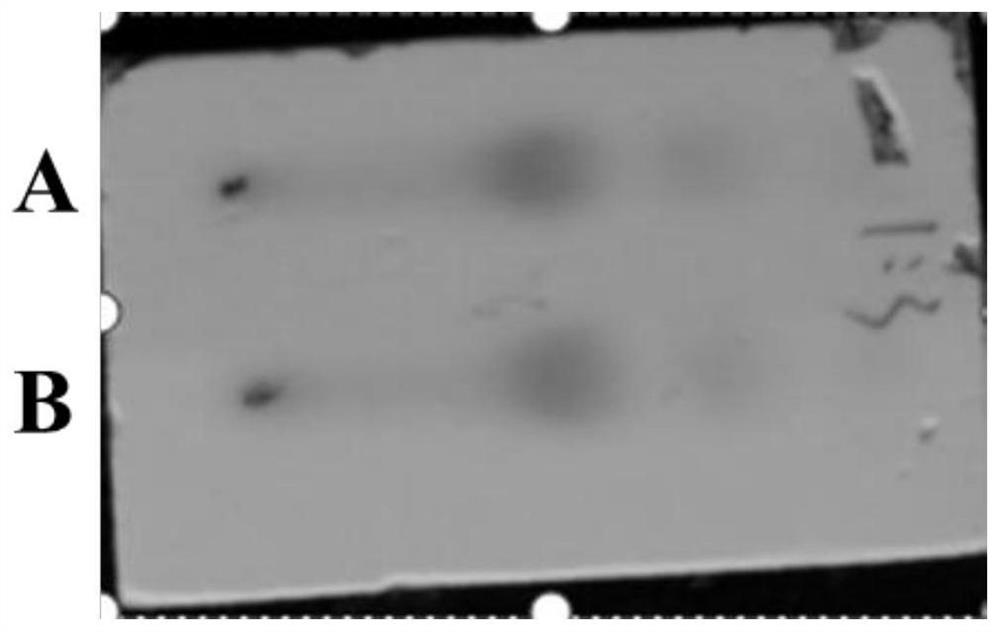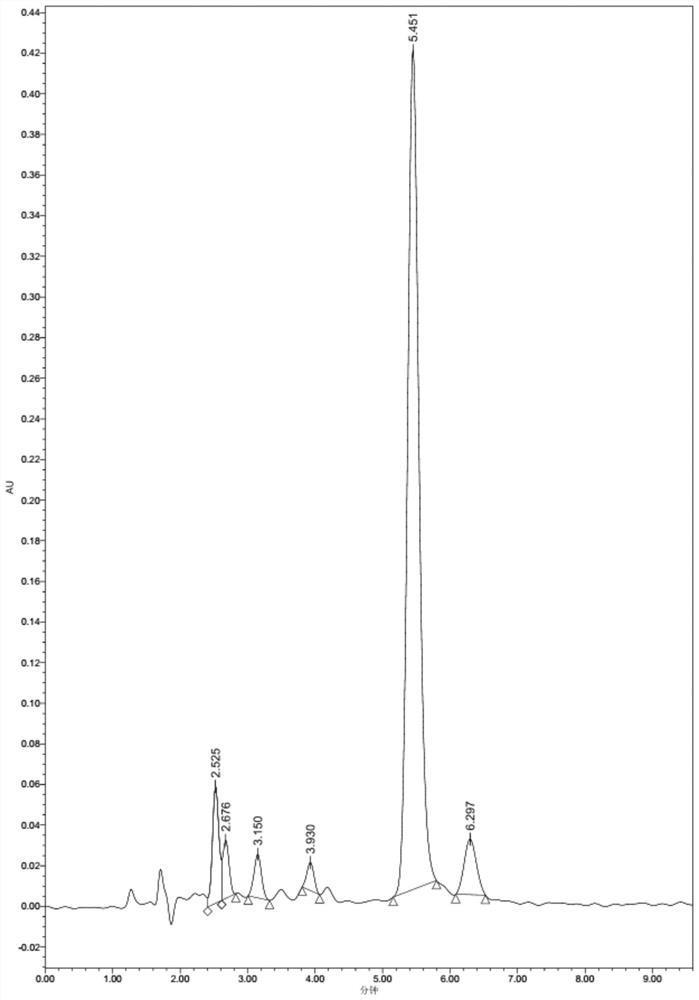Secondary metabolites of endophytic fungus Coccus sphaeroides of Ginkgo biloba and their bacteriostatic use
A technology of secondary metabolites and endophytic fungi, applied in the field of fungal metabolite research, can solve the problems of unscreened active antibacterial substances and achieve good inhibitory effect and broad-spectrum antibacterial effect
- Summary
- Abstract
- Description
- Claims
- Application Information
AI Technical Summary
Problems solved by technology
Method used
Image
Examples
Embodiment 1
[0033] Example 1 Isolation of active secondary metabolite 9α-hydroxydihydrodeoxycyclosporine
[0034] In the previous work, the inventors screened a ginkgo endophytic fungus with activity against bacterial wilt. It was identified as Nigrospora sphaerica and named as Nigrospora sphaerica Gbh45 (Nigrospora sphaerica Gbh45). On November 5, 2018, it was deposited in the China Center for Type Culture Collection (address: China. Wuhan. Wuhan University), and its deposit number is CCTCC NO: M 2018755.
[0035] Take Nigrospora sphaerica Gbh45 (Nigrospora sphaerica Gbh45) stored at -80°C and inoculate it on a PDA plate, and cultivate at 28°C until the mycelium grows vigorously (about 3 to 5 days) to complete the activation of the strain.
[0036] Pick a small amount of mycelium and inoculate it into a 500mL conical flask containing 100mL PDB liquid medium, put it in a constant temperature shaking incubator, and ferment it for 5-7 days at 28°C and 200rpm. Stop the culture when the ferme...
Embodiment 2
[0050] Example 2 Inhibitory effect of 9α-hydroxydihydrodeoxycyclosporine on Ralstonia solanacearum
[0051] Bacterial activation: inoculate the sterilized NA liquid medium (10.0 g peptone, 3.0 g beef extract powder, 5.0 g sodium chloride, dd H 2 O 1L, agar 20.0g, adjust the pH to 7.4±0.2 after the preparation, and cultivate overnight at 30°C and 200rpm.
[0052] Inhibition efficiency and MIC and IC 50 Determination of concentration: take part of the cultured R. solanacearum fermentation broth in the ultra-clean workbench to measure its OD 600 value, and then adjust the OD of the bacterial solution with sterilized NA medium 600 value to 0.1. Dissolve the target antibacterial activity with DMSO, and then use the prepared and corresponding culture medium for 2-fold dilution, so that the concentration of the compound reaches 50 μg / mL, 25 μg / mL, 12.5 μg / mL, 6.25 μg / mL, respectively. , 3.125μg / mL (DMSO<1%).
[0053] Drug blank group OD 600 measurement. Because the target anti...
Embodiment 3
[0082] Example 3 Inhibitory effect of 9α-hydroxydihydrodeoxygenosporin on common food-borne pathogen Escherichia coli
[0083] The inhibitory effect of the secondary metabolite 9α-hydroxydihydrodeoxygenosporin of Nigrospora sphaerica Gbh45, a typical food-borne Gram-negative pathogen Escherichia coli, was studied by Oxford cup method.
[0084] (1) Activation of strains
[0085]Scrape a small amount of Escherichia coli cells of the test strain from the preserved slanted strain with an inoculating loop, and inoculate it into a sterilized LB liquid medium (10 g of peptone, 5 g of yeast extract, 10 g of sodium chloride, 1 L of distilled water, pH 7.0-7.2 , sterilized at 121 °C for 20 min), and cultured for 12 h to complete the activation.
[0086] (2) Oxford cup method bacteriostatic test
[0087] A. Take 100 μL of the activated E. coli culture solution, and after diluting 100 times, take 100 μL and spread it on the LB plate to label the samples, positive control (25 μg / L strept...
PUM
 Login to View More
Login to View More Abstract
Description
Claims
Application Information
 Login to View More
Login to View More - R&D
- Intellectual Property
- Life Sciences
- Materials
- Tech Scout
- Unparalleled Data Quality
- Higher Quality Content
- 60% Fewer Hallucinations
Browse by: Latest US Patents, China's latest patents, Technical Efficacy Thesaurus, Application Domain, Technology Topic, Popular Technical Reports.
© 2025 PatSnap. All rights reserved.Legal|Privacy policy|Modern Slavery Act Transparency Statement|Sitemap|About US| Contact US: help@patsnap.com



